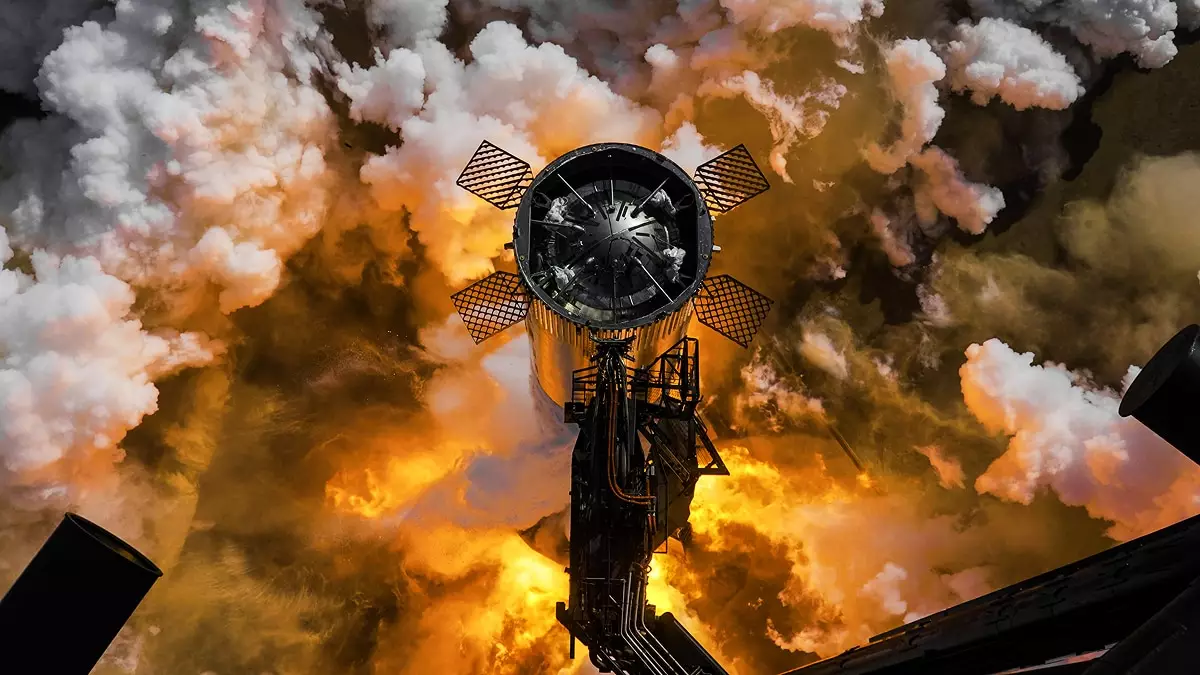SpaceX continues to push the boundaries of space exploration with its latest series of static fire tests aimed at refining the Starship launch system. At the company’s Starbase facility in Texas, engineers performed critical static fire tests on both the Super Heavy booster and the Starship’s second stage. The Super Heavy booster underwent a comprehensive full-duration test utilizing all 33 Raptor engines, simulating the extreme conditions expected at launch. By subjecting the booster to these rigorous tests, SpaceX is ensuring that it is fully prepared for the monumental challenges of interstellar travel.
In conjunction with testing the Super Heavy, the second stage of the Starship also received attention through distinct engine tests that assessed variable thrust scenarios. Each of these tests is crucial in mimicking real flight conditions, enabling engineers to gauge the vehicle’s responsiveness and reliability. These iterative design processes exemplify SpaceX’s commitment to achieving operational excellence in spaceflight.
Preparation for the Integrated Flight Test
Preparations for the upcoming Integrated Flight Test (IFT-8) are intensifying, with the next milestone being the stacking of both stages. Reports suggest that the IFT-8 mission may take place by the end of February 2025, contingent upon receiving the final green light from the Federal Aviation Administration (FAA). Until that official approval comes through, the timeline remains tentative. Nevertheless, this potential flight underscores SpaceX’s ambitious target of conducting multiple Starship launches within the next year.
SpaceX is openly committed to refining reusable rocket technology, an endeavor seen as critical for the future of sustainable space exploration. The previous test, IFT-7, launched in January 2025 showcased a mix of successes and setbacks. While the Super Heavy booster was successfully captured by the launch tower’s robotic arms, communication with the Starship’s second stage was unfortunately interrupted during ascent, leading to debris reported over the Caribbean—an incident engineers are keen to learn from.
Design Improvements and Future Missions
With the lessons learned from the past test, engineers are now focused on implementing essential design and operational improvements. Enhanced flight stability and improved controlled descent mechanisms are at the forefront of these enhancements. The overarching goal is to validate the Starship system’s capabilities, enabling it to support various upcoming missions, including NASA’s Artemis program, which aims to return humans to the lunar surface.
Scheduled for 2027, the Starship lander’s involvement in Artemis 3 represents a significant leap for both SpaceX and NASA. However, before Starship can be deployed for human spaceflight and commercial operations, additional test flights will be necessary. Each of these test flights serves not just as a validation but also shapes the trajectory of human exploration into deeper space.
As SpaceX progresses with its ambitious plans for the Starship system, the organization remains at the forefront of innovation in aerospace technology. The combination of rigorous testing, continuous improvement, and a focused eye on future missions highlights the important role that SpaceX aims to play in the next era of human exploration. As they shift gears towards operational readiness, the company’s developments hold promise for unprecedented advancements in our reach beyond Earth.

Leave a Reply